Spring Training
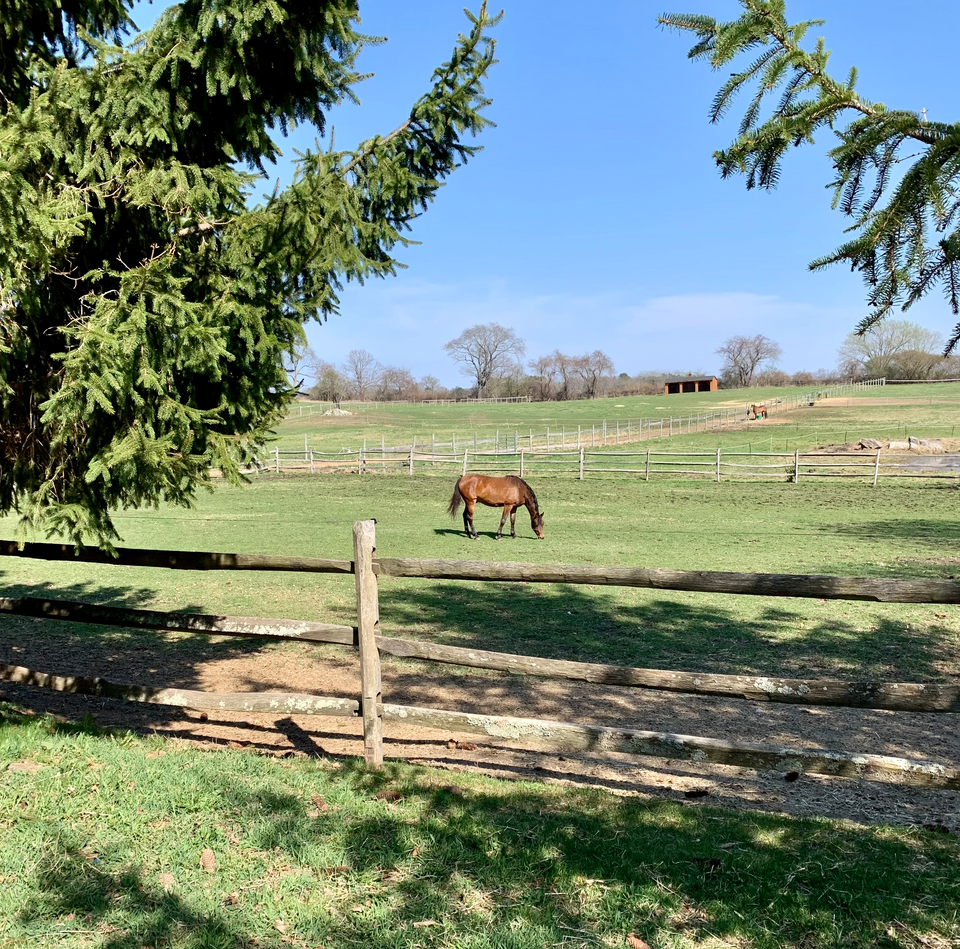
This post will be lengthy since I skipped last week's update, but I'll try to keep it concise. At least, there are plenty of lovely Levi images to entertain in case you would rather not read a novel.
In this post, I wanted to share our current training schedule and goals for the rest of the month. If you followed this page from our previous blog on Facebook, you would know that I have not yet hitched Levi to his new Frey Sprint cart, but have planned to do so this month for some time. In fact, we are on track to accomplish this milestone this week, and I am hoping we can hitch him for the very first time this Thursday, his fourth birthday! He is showing every sign of being ready for this and we have been working diligently every day to prepare him for this important event. I will discuss how I do this, and the specific plan for the next several hitches, in Thursday's birthday post.
Since moving Levi into the smaller, cozy "pony barn" with seven other horses, he has become very comfortable; he has good mates in Ollie (below) and Saint, two kind older geldings who watch out for him. His stall front is open so he can flirt with Ollie, who usually reminds Levi about his place when he is too playful. With his socialization and companionship needs met at nighttime, and his need for space and fresh forage to graze in a large paddock all to himself during the day, he is very happy and relaxed, leading to a much more focused mindset in training.
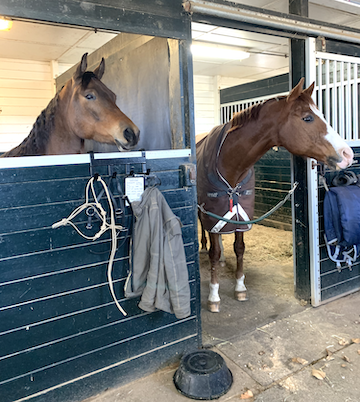
Our training schedule is focused on two major endeavors: building fitness - physical stamina and strength, and preparing Levi for transitioning from purely ground work to working under cart. Levi and I work alone currently, since we do not have a trainer or anyone else to help us, but he is coming along very well and I'm happy with our progress so far. This time really reminds me of working with horses when I was younger, and having to figure most things out on my own, but with the advantage of many more years of experience and a great community to reach out to when I do need advice.
Our weekly training is structured around several core driving workouts based on long-lining or ground driving, with two sessions to build cardiovascular fitness consisting of a long walk out (trail walk) and lunge line work, and at least one day devoted to desensitization. We use his tire pull (drag) multiple times per week to help build strength (I discuss this tool and its use more in the next few paragraphs). Nearly all of our training is done in various spaces outdoors- wherever I think he would benefit from working on a given day, essentially- even though we have the option of working in the indoor arena, because the farm itself is such a fantastic, rich training environment. It is an equestrian jungle gym we can utilize to expose Levi to multiple potentially challenging situations and help him build confidence. The outdoor arena provides deep sand footing, and has a few obstacles including a small wooden bridge. As it is set up on a higher point of the property, it provides a gorgeous panoramic view of the surrounding farms and fields, and is an endless source of constant activity which is great for desensitizing a young horse. There is a round pen there as well, which we occasionally use, although if I want to work with Levi on a circle I prefer to use proper technique with a cavesson, side reins, surcingle and a lunge line in the indoor arena. We do still utilize the secure and spacious indoor arena for many of our workouts, however. Regardless of the space, I try to vary the work every day, making sure there is plenty of coverage of all elements he will need to build competence as a well-rounded driving horse.
The most important and essential new training development that has had the single greatest impact for Levi has been the introduction of a 30-minute walking warmup before every single workout, performed rain or shine, in just a halter or cavesson. This walking warmup has proven so valuable that it has become indispensable and we will be utilizing it for the rest of our training. When I first meet Levi to work with him, I collect him in his paddock, push the workout app start button on my watch, and we go right out into this warmup without wasting any time. The warmup is performed at a brisk walk - more like a march - and toward the end I may ask for a minute or two trotting as well, depending on how Levi is feeling. This is all done in hand, of course, which is great for my fitness as well! The walking warmup utilizes the farm roads and trails, and arenas, and makes real use of the only hill on the property. This hill can barely be considered as such, as the grade is about 2-3% at best, but it is a slow burner at 1/4 mile in length from a designated starting point; there are a couple of very short but steep little 'hills' up to the barn at the start/end of this long hill that we use as well. Levi is learning where his 'brakes' are, at this point. What I like best about this long hill is that it has not one but five different kinds of footing that horses will routinely encounter, spread along the pathway. From packed dirt with loose gravel, wood chips, soft grass, loose dirt, and larger stone gravel, Levi can experience navigating all kinds of different footing over the course of a single hill repeat. At the top of the hill is a public walking path connecting to conservation trails. There are cattle farmed in the field beyond this; there is a marsh filled with diverse wildlife and birds, multiple species of trees and plants, and plenty of hikers and dogs. Collectively, there are numerous environmental distractions for a young horse to confront and accept that he will not die if he encounters them. We even march past Levi's good buds Ollie and Paxton as well, cheering him on at the top of the hill, but we don't stop to say hello. The key is to see and acknowledge everything, positive or negative or stressful, without reacting to it. No matter what, we keep calm and just keep walking until it's time to go into the next phase of the workout.
The brisk walking warmup never gets the horse sweaty or excited, nor does it bore or relax him to the point where he falls asleep in the cross-ties afterward while I quickly tack him up. It is the perfect 'wake up' for mind and body as well as a nice long hello between the two of us to check in with each other. I find that we are both calmer and happy afterward, regardless of how we started. I prefer to tack up quickly after the warmup because it is a nice opportunity to practice 'stand' while giving a little reward. He is usually very quiet during this time, although he knows we will drive next so he is always attentive and curious about what we will do. Levi really enjoys his walking warmups, and they have become so important to our routine that sometimes, if all I have is 30 minutes to work with him (which is rare but has happened before), I will opt to do this instead of anything else.
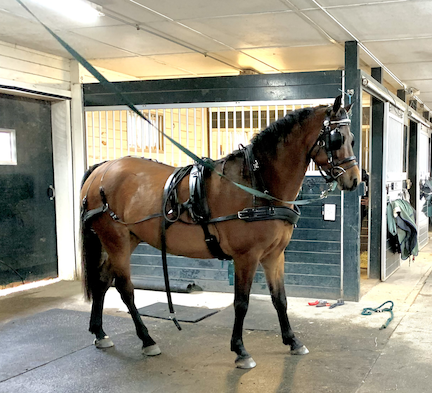
The core driving workouts incorporate some combination of long-lining and ground driving and always start with a 10 minute walking ground drive around whatever space we are working in for that day. This helps me check in with him and see how he is moving in the bridle and harness that day; I can make adjustments for the rest of the workout based on what he tells me. The core workouts are usually no longer than 45 minutes, most commonly 30 minutes, in total length, including the duration I ask for him to whoa and stand quietly. We usually drive patterns and work with his tire drag (shown in the image below). The drag is a large trailer tire attached by a heavy chain to a wooden singletree. The carabiners on the chains connecting to the singletree hooks attach to the rings on his traces. This setup makes it possible to shorten or lengthen the distance between Levi's hind feet and the singletree for various effects, and provides a good bit of noise as well even in soft arena surfaces. The bouncing/jolting and surging motion of the tire at walk and trot simulates some of the pulling motion on his collar that he will experience with the cart. It is heavier than a previous version he pulled last year, which is appropriate for his strength and size at this time. He has driven all over the property with this drag. I prefer to work a pattern without the drag first, at walk and working trot, then attach the tire and run the same pattern. I pay careful attention to whether he is getting sweaty or fatigued; his physical fitness is improving but I don't push him to the point where he is sore or blowing hard. Most of these workouts are performed at a fast walk with some trotting, but never cantering at this stage. I do rely a lot on upward/downward transitions and lots of practicing 'whoa' and 'stand'.
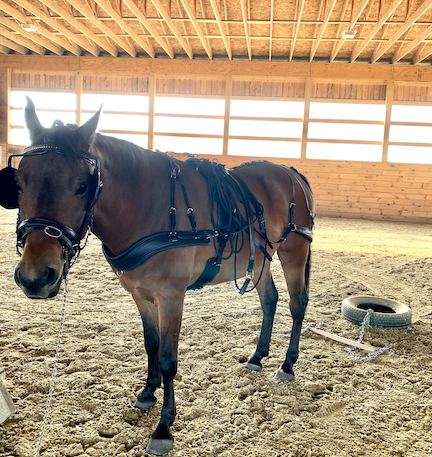
One exercise Levi and I have mastered that we both find very relaxing at the beginning of a workout is a simple little pattern to support yielding to the inside rein. For this exercise, two traffic cones are placed about 40 feet apart on the long side of an arena, and set 10 feet off from the side, leaving a gap between the cone and the wall. A third cone is placed between the two, leaving a wider gap of about 20 feet. This triangle configuration of cones is shown in the image of our indoor arena below. The driver enters at one end and drives between the cone and the wall, trying to keep the distance between the cone and horse minimal without touching the cone, and then sends the horse out to the middle cone, while the driver walks in a straight line between the cones. The driver keeps walking the same path while bringing the horse around the middle cone, and gradually guiding the horse back toward the wall, finally turning back onto the track several feet before reaching the third cone to exit the pattern. One can drive back to the starting point to repeat the pattern, or make a small loop and tackle it from the opposite direction. The exercise can be performed anywhere there is a straightaway with either a wall or fence line, and can be made more difficult by shortening the distance between the cones or increasing the spacing of the middle cone. The goal is to keep the horse moving at a constant tempo while yielding to the inside and keeping solid contact on the outside rein; horses unfamiliar with this sensation can become confused by the contact and will stop, or try to turn too early or late, so it is a great chance to refine cues and communication. It is also a great exercise for drivers to become more fluid and accurate with the long lines and also to check how well the horse is responding on either side. After several repetitions of this from both directions, I also noticed it was helping to target the less dominant sides for both Levi and I; we are both stronger on our right and Levi tends to require a stronger right rein, but this exercise makes me more mindful of this and seems to help Levi as well.
Whenever possible, I put Levi's cart right out where he can see it while we work around it. I hook and unhook him to his drag right beside the cart as well. I will often drive him up in front of it like I am going to hook him to it, ask him to adjust his position with a few taps or step or two forward or back to align with the shafts, and then have him stand quietly while I move the cart up, lift up the shafts and put them down again, exactly as I would if we were going to actually hitch or unhitch. He is very quiet during this, which is a great sign.
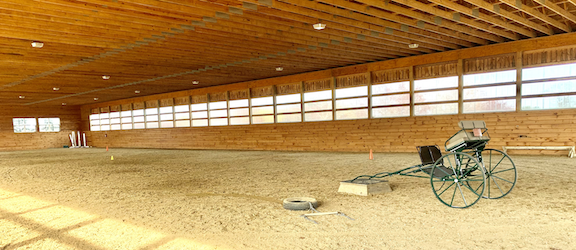
Once Levi has done a maneuver correctly a couple of times, I praise him and move on to something else; we don't usually drill anything. The last several minutes of our workouts are warm down/relaxation time. I always end by slowly walking him in hand a little bit, letting him stretch down or just stand for a moment, praising him and patting him, checking in on him, fussing with him. He knows that rest, friends, water and food are waiting for him. He stands quietly to be unharnessed, and he gets to have a nice treat while I either groom him or hose him down and then walk him out to roll in the sand or graze in the yard a little bit before I put him back in his turnout, or his stall for the night.
The total working time, including walking warmup, is usually 60-80 minutes on most days, sometimes a little longer. We work five solid days per week, with one day completely off, and often two, depending on what he needs for that week. I do try to alternate heavy weeks with light weeks (work load, total time, or teaching new skills that need more time to absorb) and hard days with light days. He is positively responding both physically and mentally to the work without becoming tired, sour, sore, or bored.
Thursday is a red letter day for us for sure as it will be the first hitch! While I'll try to film it if possible, because it will require all of my focus (although I will have an assistant to help head the horse) I don't promise I'll capture what we are doing in the moment, but will do my best. Wish us luck, and also a happy fourth birthday to our baby Levi on April 20th!
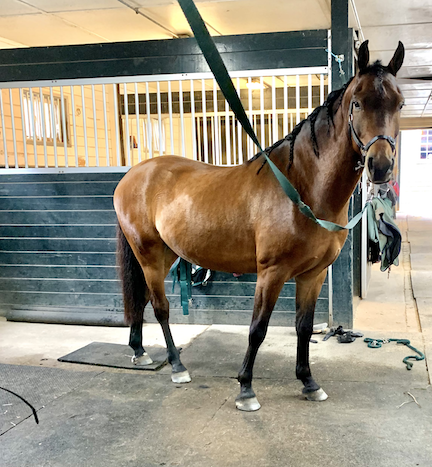
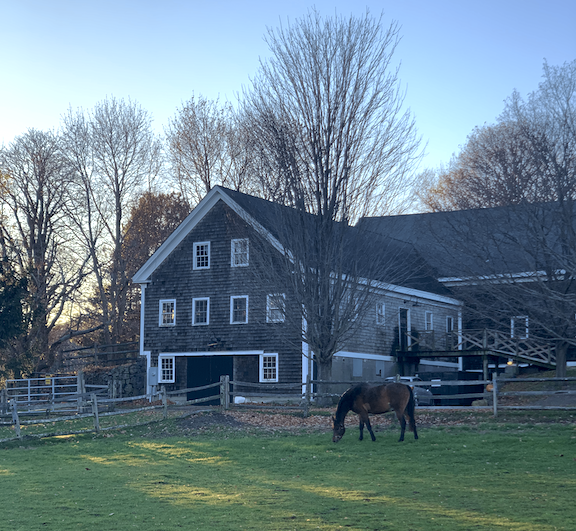
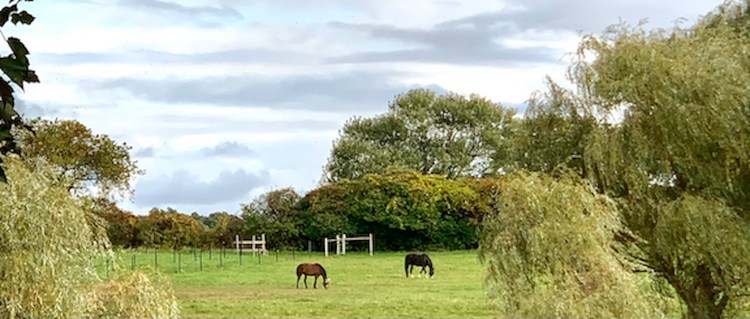
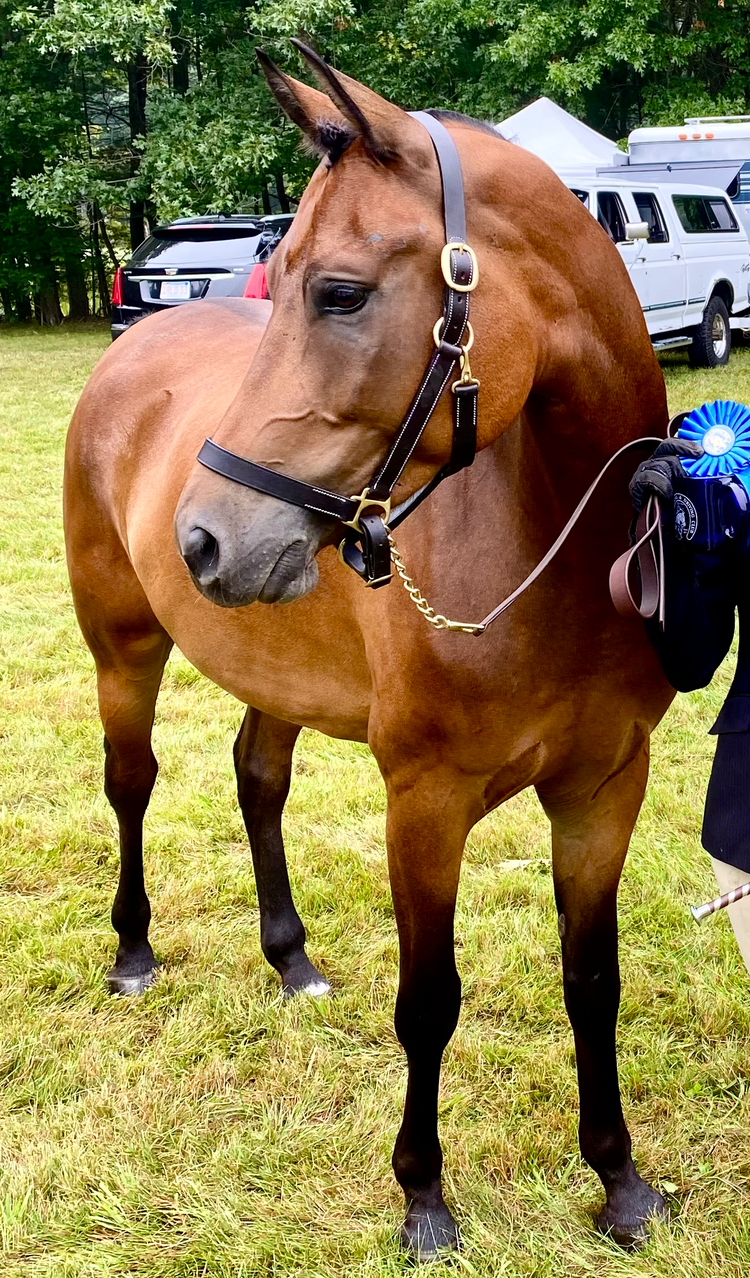
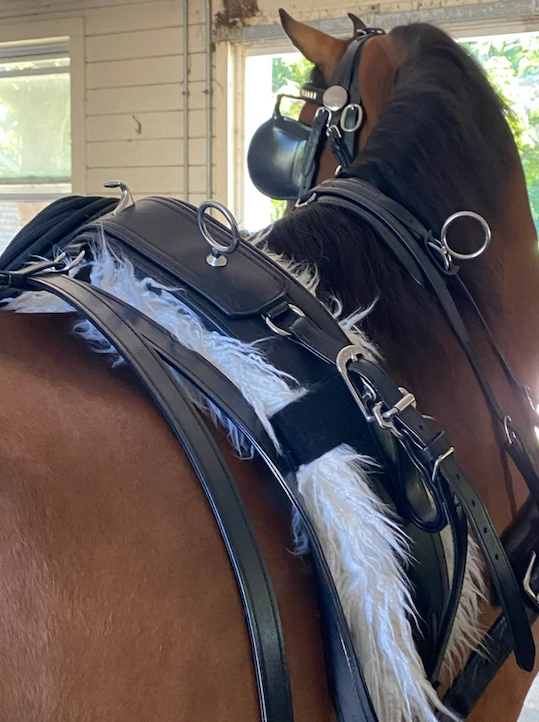
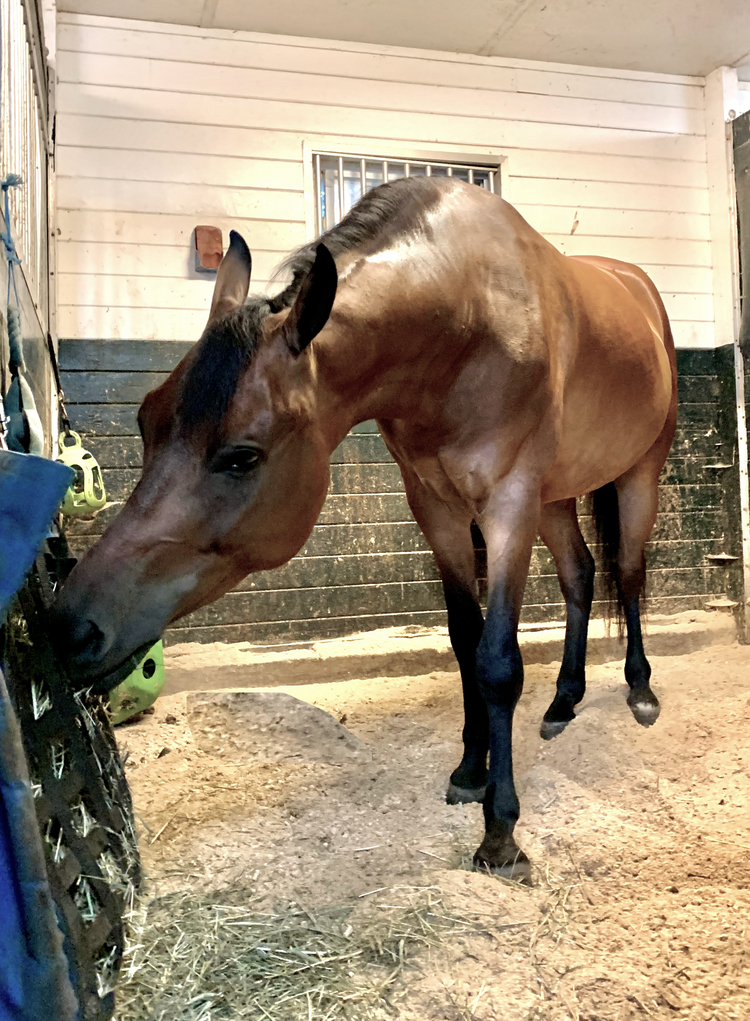
Member discussion